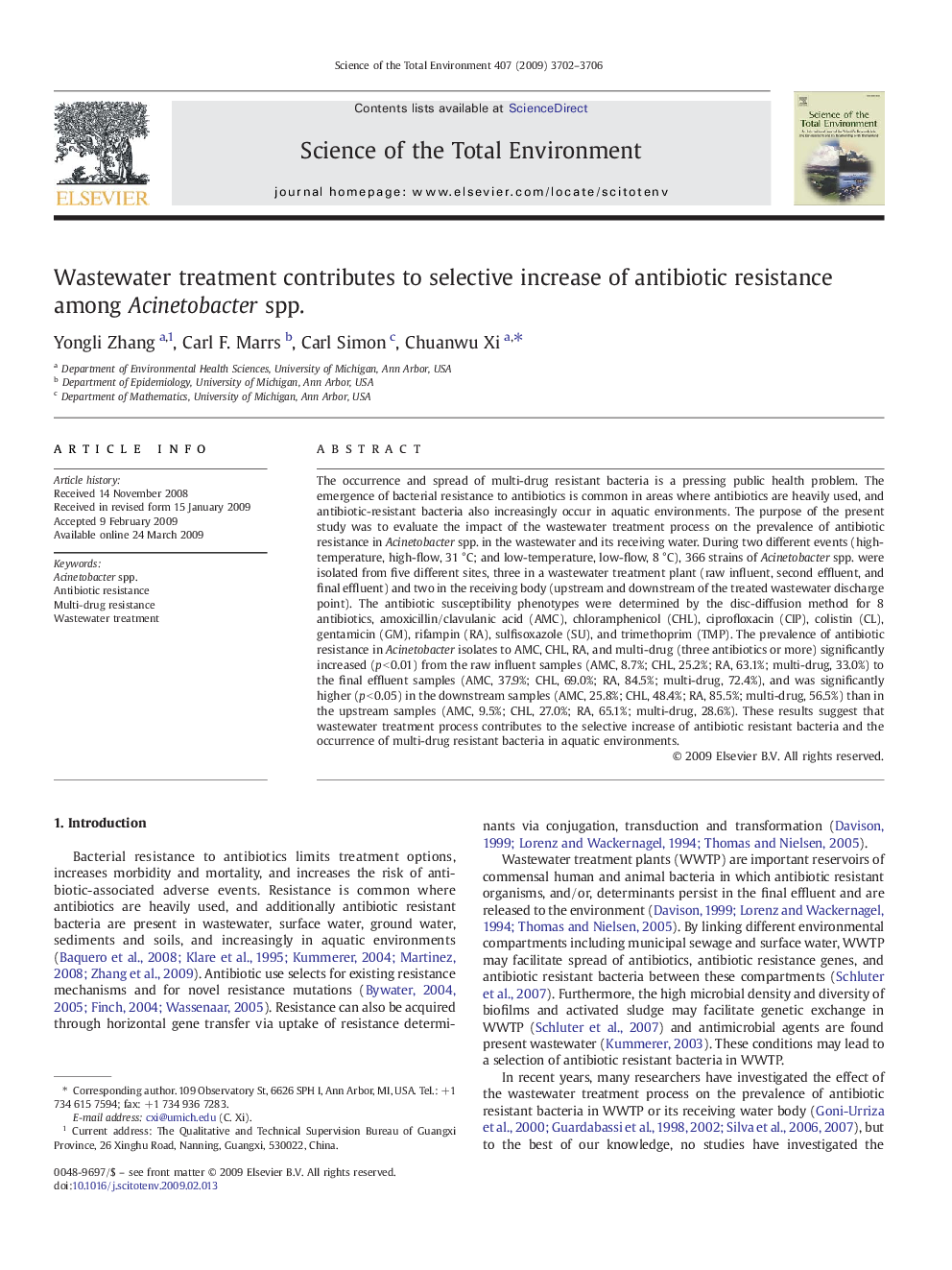| کد مقاله | کد نشریه | سال انتشار | مقاله انگلیسی | نسخه تمام متن |
|---|---|---|---|---|
| 4431815 | 1619898 | 2009 | 5 صفحه PDF | دانلود رایگان |

The occurrence and spread of multi-drug resistant bacteria is a pressing public health problem. The emergence of bacterial resistance to antibiotics is common in areas where antibiotics are heavily used, and antibiotic-resistant bacteria also increasingly occur in aquatic environments. The purpose of the present study was to evaluate the impact of the wastewater treatment process on the prevalence of antibiotic resistance in Acinetobacter spp. in the wastewater and its receiving water. During two different events (high-temperature, high-flow, 31 °C; and low-temperature, low-flow, 8 °C), 366 strains of Acinetobacter spp. were isolated from five different sites, three in a wastewater treatment plant (raw influent, second effluent, and final effluent) and two in the receiving body (upstream and downstream of the treated wastewater discharge point). The antibiotic susceptibility phenotypes were determined by the disc-diffusion method for 8 antibiotics, amoxicillin/clavulanic acid (AMC), chloramphenicol (CHL), ciprofloxacin (CIP), colistin (CL), gentamicin (GM), rifampin (RA), sulfisoxazole (SU), and trimethoprim (TMP). The prevalence of antibiotic resistance in Acinetobacter isolates to AMC, CHL, RA, and multi-drug (three antibiotics or more) significantly increased (p < 0.01) from the raw influent samples (AMC, 8.7%; CHL, 25.2%; RA, 63.1%; multi-drug, 33.0%) to the final effluent samples (AMC, 37.9%; CHL, 69.0%; RA, 84.5%; multi-drug, 72.4%), and was significantly higher (p < 0.05) in the downstream samples (AMC, 25.8%; CHL, 48.4%; RA, 85.5%; multi-drug, 56.5%) than in the upstream samples (AMC, 9.5%; CHL, 27.0%; RA, 65.1%; multi-drug, 28.6%). These results suggest that wastewater treatment process contributes to the selective increase of antibiotic resistant bacteria and the occurrence of multi-drug resistant bacteria in aquatic environments.
Journal: Science of The Total Environment - Volume 407, Issue 12, 1 June 2009, Pages 3702–3706